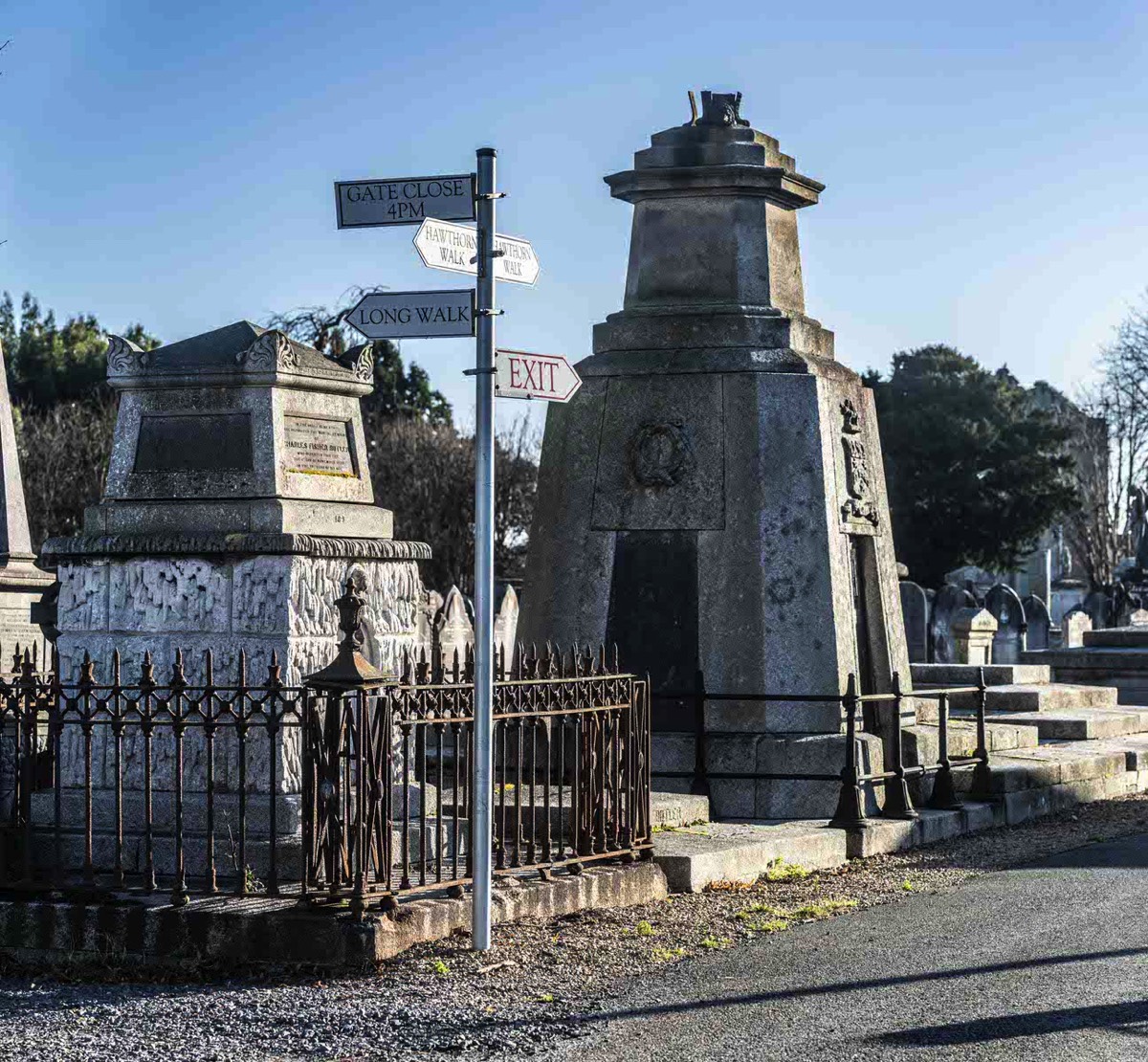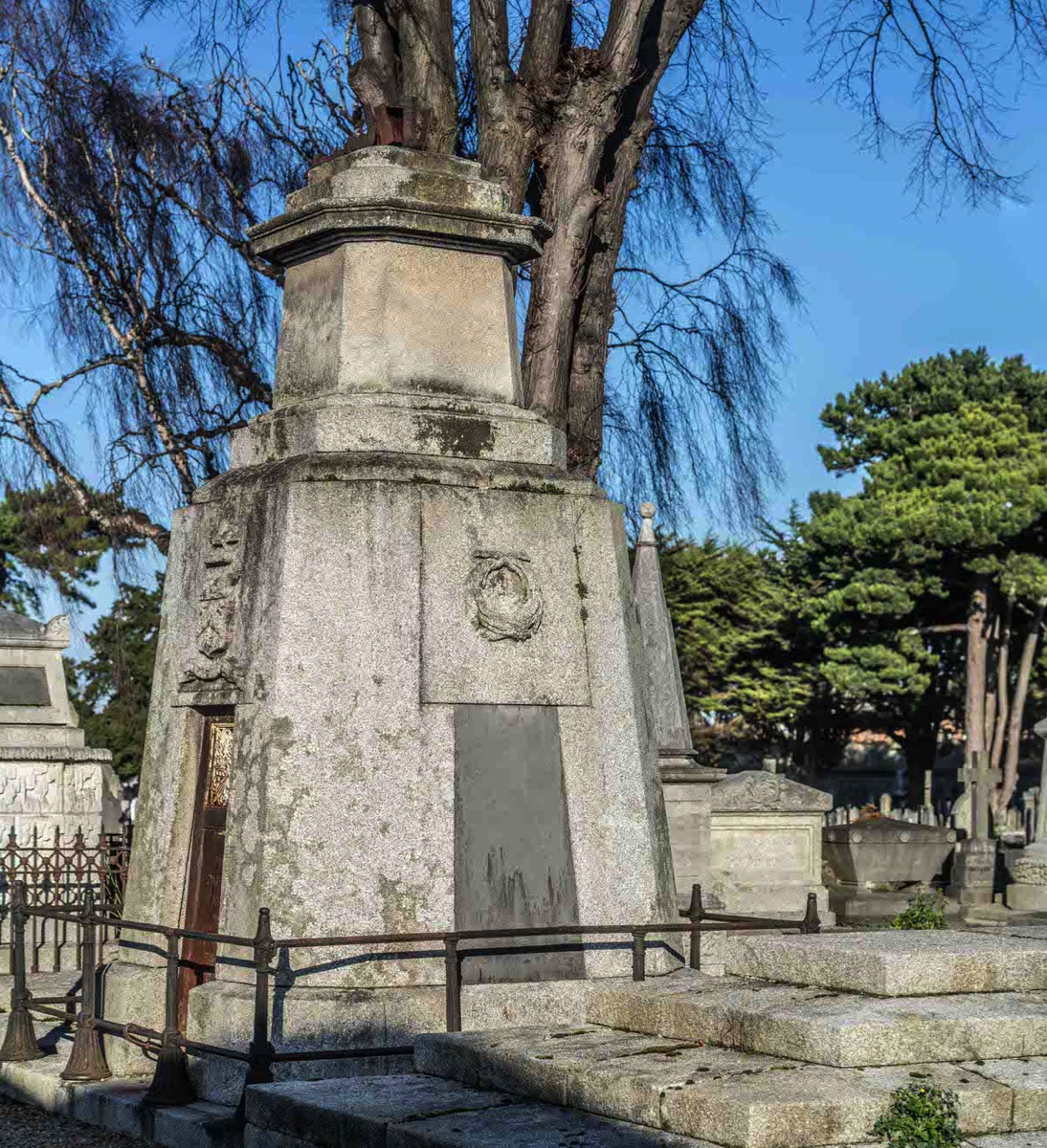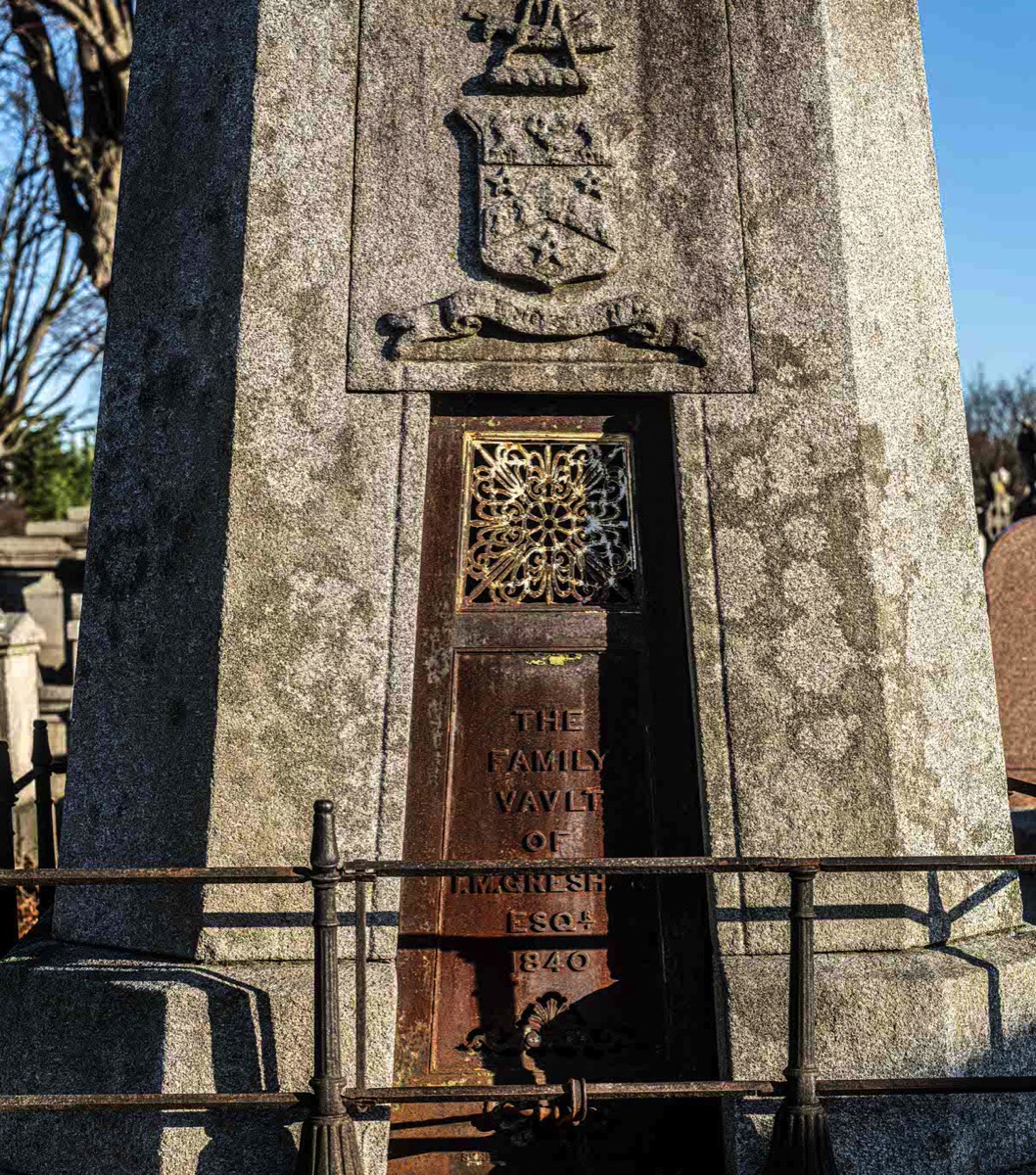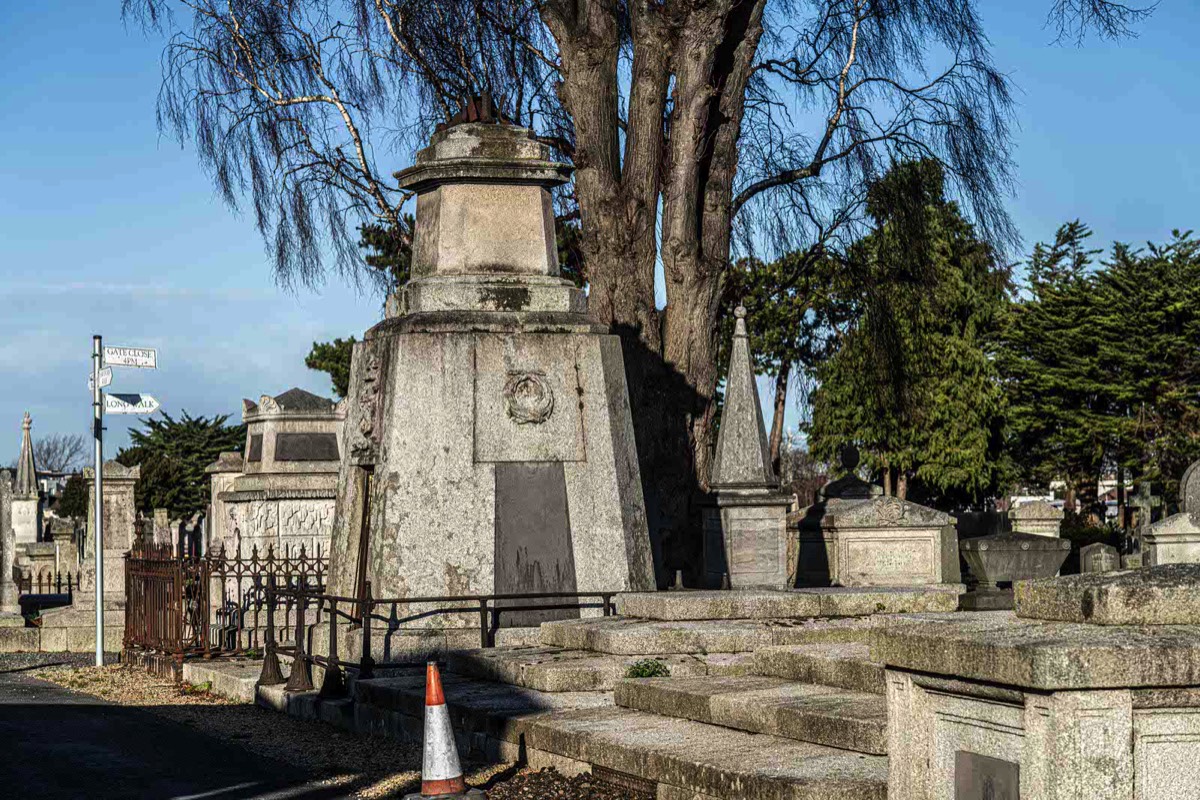THE GRESHAM FAMILY VAULT A CASE OF TAPHOPHOBIA
THE GRESHAM FAMILY "VAVLT" [A CASE OF TAPHOPHOBIA]
The pedestal on top of the tapered walls once supported a bell with a chain running from it into the vault. This was erected with the purpose of allowing a lady who was interred (and who had a fear of being buried alive) to ring the bell if she awoke.
Fear of being buried alive is the fear of being placed in a grave while still alive as a result of being incorrectly pronounced dead. The abnormal, psychopathological version of this fear is referred to as taphophobia.
Before the era of modern medicine, the fear was not entirely irrational. Throughout history, there have been numerous cases of people being buried alive by accident. In 1905, the English reformer William Tebb collected accounts of premature burial. He found 219 cases of near live burial, 149 actual live burials, 10 cases of live dissection and 2 cases of awakening while being embalmed.
Hotel founder, Thomas Gresham, was a foundling child, abandoned on the steps of the Royal Exchange, London. He was named after the founder of that institution, Sir Thomas Gresham, a famous merchant-politician in the Elizabethan era.
Gresham came to Ireland, and as a young man obtained employment in the service of William Beauman of Rutland Square (now Parnell Square), Dublin. After some time, and while still comparatively young, he became butler to this family.
In 1817, Gresham left Beauman's household and purchased 21-22 Sackville Street (now O'Connell Street). How he acquired the capital for the purchase is unknown. Over the next 48 years, he operated the hotel as a lodging house catering mostly to the wealthy aristocracy and MPs who passed through Dublin on their way to London.
The hotel was badly damaged during the Irish Civil War, but rebuilt during the 1920s to a high specification.
The pedestal on top of the tapered walls once supported a bell with a chain running from it into the vault. This was erected with the purpose of allowing a lady who was interred (and who had a fear of being buried alive) to ring the bell if she awoke.
Fear of being buried alive is the fear of being placed in a grave while still alive as a result of being incorrectly pronounced dead. The abnormal, psychopathological version of this fear is referred to as taphophobia.
Before the era of modern medicine, the fear was not entirely irrational. Throughout history, there have been numerous cases of people being buried alive by accident. In 1905, the English reformer William Tebb collected accounts of premature burial. He found 219 cases of near live burial, 149 actual live burials, 10 cases of live dissection and 2 cases of awakening while being embalmed.
Hotel founder, Thomas Gresham, was a foundling child, abandoned on the steps of the Royal Exchange, London. He was named after the founder of that institution, Sir Thomas Gresham, a famous merchant-politician in the Elizabethan era.
Gresham came to Ireland, and as a young man obtained employment in the service of William Beauman of Rutland Square (now Parnell Square), Dublin. After some time, and while still comparatively young, he became butler to this family.
In 1817, Gresham left Beauman's household and purchased 21-22 Sackville Street (now O'Connell Street). How he acquired the capital for the purchase is unknown. Over the next 48 years, he operated the hotel as a lodging house catering mostly to the wealthy aristocracy and MPs who passed through Dublin on their way to London.
The hotel was badly damaged during the Irish Civil War, but rebuilt during the 1920s to a high specification.




As an Amazon Associate I earn from qualifying purchases
You will find links to buy products from Amazon, Google and other partners. If you click on these links, you’ll find that the URL includes a small extra piece of text which identifies that the click came from my websites. This text is an affiliate code, and it means that I get a small percentage of the money you spend if you choose to buy that product, or, in some cases, other products from the site soon after. These affiliate links help pay the costs of producing my websites and ensure that the content is free to you.